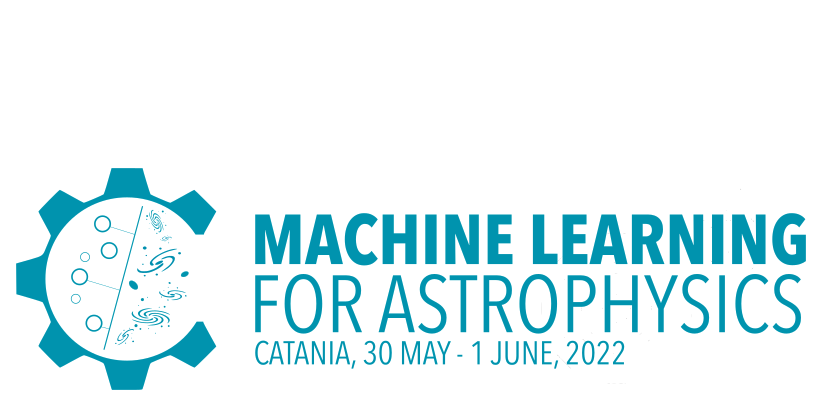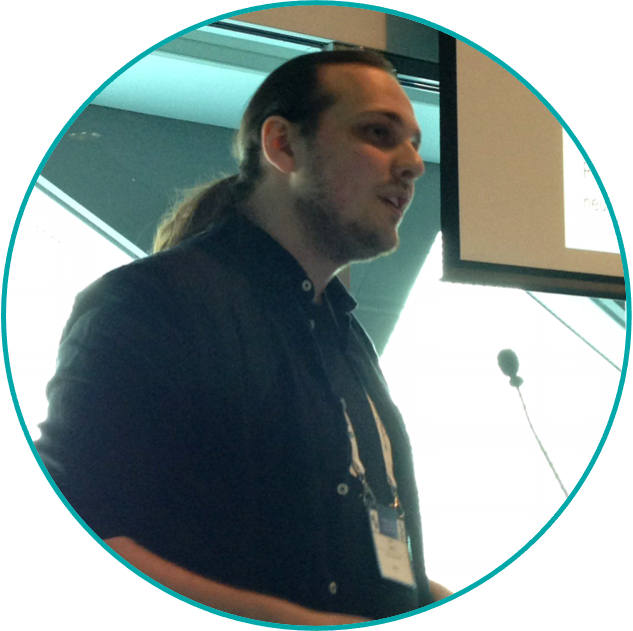Kai Polsterer
Heidelberg Institute for Theoretical Studies (Germany)
► Review of supervised and unsupervised learning techniques for astronomy
 |
Kai L. Polsterer received his diploma in computer science at the Technical University of Dortmund, before he switched to physics and astronomy at the University of Bochum where he received his PhD in Physics and Astronomy in 2011. During that time he was responsible for realizing the control software for one of the main instruments (LUCI) at the world׳s largest optical telescope, the Large Binocular Telescope. Besides working on control software, he started developing and applying machine learning techniques to analyse complex and large data sets. He is involved in the efforts of the International Virtual Observatory Alliance, ensuring uniform access to astronomical data and the IEEE task-force on mining complex astronomical data. Currently he is head of the Astroinfomatics group at the Heidelberg Institute for Theoretical Studies. |
Concetto Spampinato
Università di Catania (Italy)
► Emerging trends, techniques, algorithms & tools in deep learning research
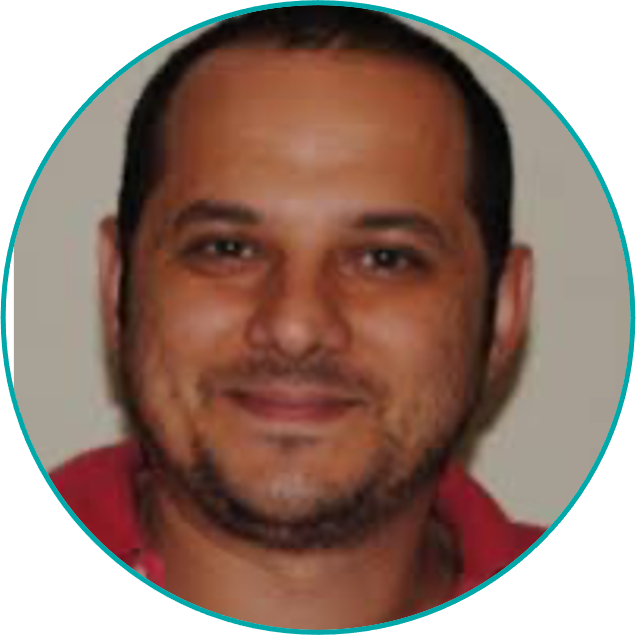 |
Dr. Concetto Spampinato is an Assistant Professor at the University of Catania. In 2014, he founded, and currently leads, the PeRCeiVe Lab at same university that hosts several Ph.D. students, RA assistants and assistant professors. Since April 2018 he is also affili- ated as a ‘‘Courtesy Faculty Member’’ with the CRCV at the University of Central Florida (USA). His re- search interests lie mainly in learning-based computer vision and pattern recognition by publication in top- tier journals (IEEE TPAMI, IJCV, CVIU) and conferences (CVPR, ICCV, IROS). He has published over 160 papers on international journals or conferences (Google Scholar: 4373 citations, h-index 38). |
Michelle Lochner
University of the Western Cape/SARAO (South Africa)
► Anomaly detection in astrophysics
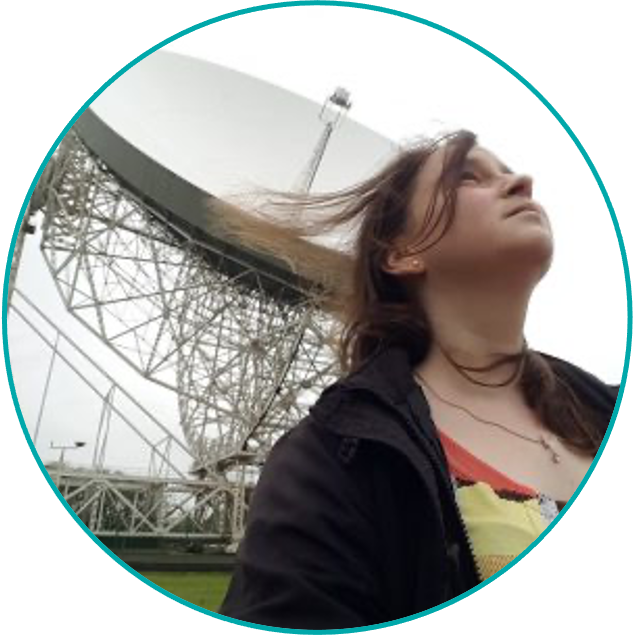 |
Born in South Africa with a PhD from the University of Cape Town, Dr. Michelle Lochner is a Senior Lecturer with a joint position between the University of the Western Cape and the South African Radio Astronomy Observatory (formerly SKA South Africa). Her focus is on cosmology and trying to get the best out of combining optical and radio telescopes like the Vera C. Rubin Observatory, in Chile, as well as the Square Kilometre Array and its precursor, MeerKAT, in South Africa. She works on developing new statistical techniques and using machine learning to tackle the masses of data we are dealing with in astronomy, currently focusing on the use of anomaly detection for scientific discovery. |
Massimo Brescia
INAF, Osservatorio Astronomico di Capodimonte (Italy)
► Time Series, Transients in astronomy
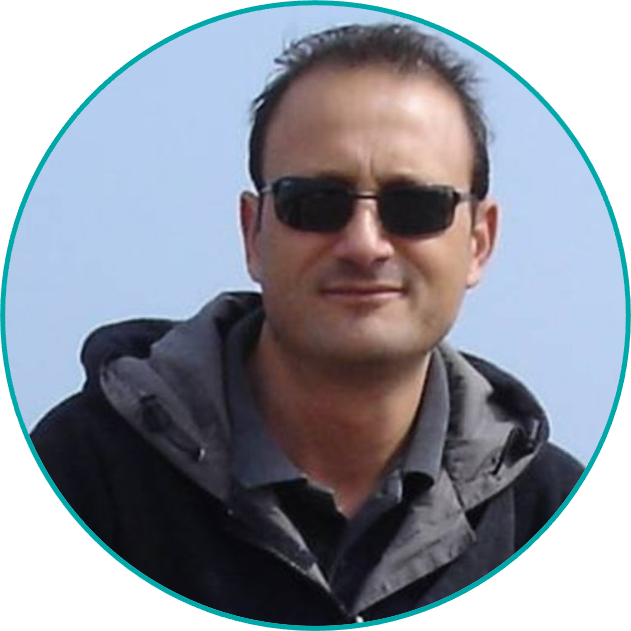 |
Astronomer specialized in Astroinformatics and astronomical technologies. After graduating in Computer Science with specialization in Artificial Intelligence, between 1994 and 2008 he assumed the positions of INAF Head of Assembly, Integration and Verification (AIV Manager) of the ESO-VST (European Southern Observatory - VLT Survey Telescope) project in situ (Cerro Paranal, Chile), lecturer and contract professor of Computer Architecture and Astronomical Technologies at the Departments of Computer Science and Physics of the Federico II University, respectively, and member of several international astrophysical instrumentation projects with ESO (VIMOS, Visible Infrared Multi Object Spectrograph), INAF (TNG, Telescopio Nazionale Galileo), INFN (NEMO, NEutrino Mediterranean Observatory). Since 2009, he has held and holds various roles and positions of scientific responsibility in international astrophysics projects from Earth and from Space (DAME, CLASH-VLT, ESA-Euclid, ESO-ALMA, SKA, VST-KiDS), various involvements in projects co-financed by PRIN-MIUR, INAF and MIUR-awards), obtaining, on a competitive basis and as Co-I, access to international observation facilities (ESO VISTA and VST surveys), European projects (FP7 Vialactea, EU COST Action TD-1403 Big-Sky-Earth data, H2020 ITN SUNDIAL, H2020 SYNERGY EcoGal), as well as academic teaching assignments at various universities. In March 2021 he was appointed by the Director of the INAF National Scientific Unit for Optical and Infrared Astronomy, as national manager of the program "Italian participation in the Rubin-LSST project (V. Rubin Observatory - Legacy Survey of Space and Time) ". In May 2021 he received the honorary appointment of “Euclid Consortium Builder” from the international board of the ESA-Euclid space mission. He is the author of more than 200 scientific works, including monographs, contributions to academic volumes, articles in specialized journals, contributions to conferences and technical reports, as well as a member of international editorial committees. |
Grazia Umana
INAF, Osservatorio Astrofisico di Catania (Italy)
► The Square Kilometre Array and its precursors
|
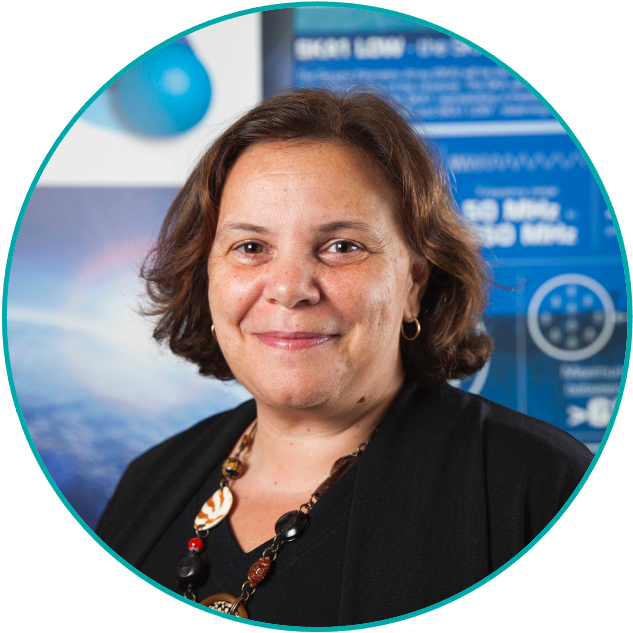 |
Director of Research at INAF, working at the Astrophysical Observatory of Catania. Member of the INAF Board. She got her PhD in Astrophysics in 1990 at the University of Catania, with a thesis in the field of "Stellar Radio Astronomy", carried out at the National Radio Astronomy Observatory (NRAO), USA. From 1990, researcher at the Noto VLBI station of the CNR Institute of Radio Astronomy and since 2006, researcher at INAF at the Astrophysical Observatory of Catania (OACT), establishing a Among her main scientific interests: SKA and its pathfinders; the study of final phases of stellar evolution; the design and scientific exploitation of radio Galactic Plane surveys. Member of numerous national and international scientific and technical committees in the field of Radio Astronomy and in particular of the SKA (Square Kilometre Array) project. |
David Cornu
LERMA, Observatoire de Paris, PSL research Université, CNRS, Sorbonne Université (France)
► Machine learning developments in Radio Astronomy (or in the era of SKA and precursors)
|
|
I am a French numerical astrophysicist presently working as a postdoctoral researcher at Paris Observatory, University PSL (Paris Sciences Lettres) as a member of the LERMA (Laboratoire d’Etudes du Rayonnement et de la Matière en Astrophysique et Atmosphères) laboratory. I mainly work on the development of state-of-the-art Machine Learning approaches and tools for the analysis of massive datasets from modern giant interferometers (LOFAR, ALMA, NenuFAR, SKA, …), in the context of the MINERVA project. Overall, I am interested in how ML methods can be used to solve existing and upcoming astrophysical problems, and in how the specific properties of astronomical datasets are challenging usual ML approaches. Previous and present primary studies:
|
Marco Aldinucci
Università di Torino (Italy)
► Computing infrastructures, trends and innovative devices for AI
 |
Marco Aldinucci is a full professor and the P.I. of the Parallel Computing research group at the University of Torino. He received his Ph.D. from the University of Pisa (2003), and he has been a researcher at the Italian National Research Council (CNR). He is the author of over 120+ scientific articles (see Google scholar). He is the recipient of the HPC Advisory Council University Award 2011, the NVidia Research award 2013, the IBM Faculty Award 2015, the Autodesk award 2021. He has participated in over 15 EU-funded research projects on parallel and cloud and high-performance computing attracting over 6M€ of research funds to the University of Torino. He has been the Italian delegate at the Governing Board of the EuroHPC Joint Undertaking (2018-2021). He has led the design of the HPC4AI laboratory and the C3S@UNITO competency centers. From March 2021 he is the founding director of the CINI “HPC Key Technologies and Tools” national laboratory, gathering researchers from 35 Italian Universities. He is the co-designer of the FastFlow programming framework and several other programming frameworks and libraries for parallel computing. |
